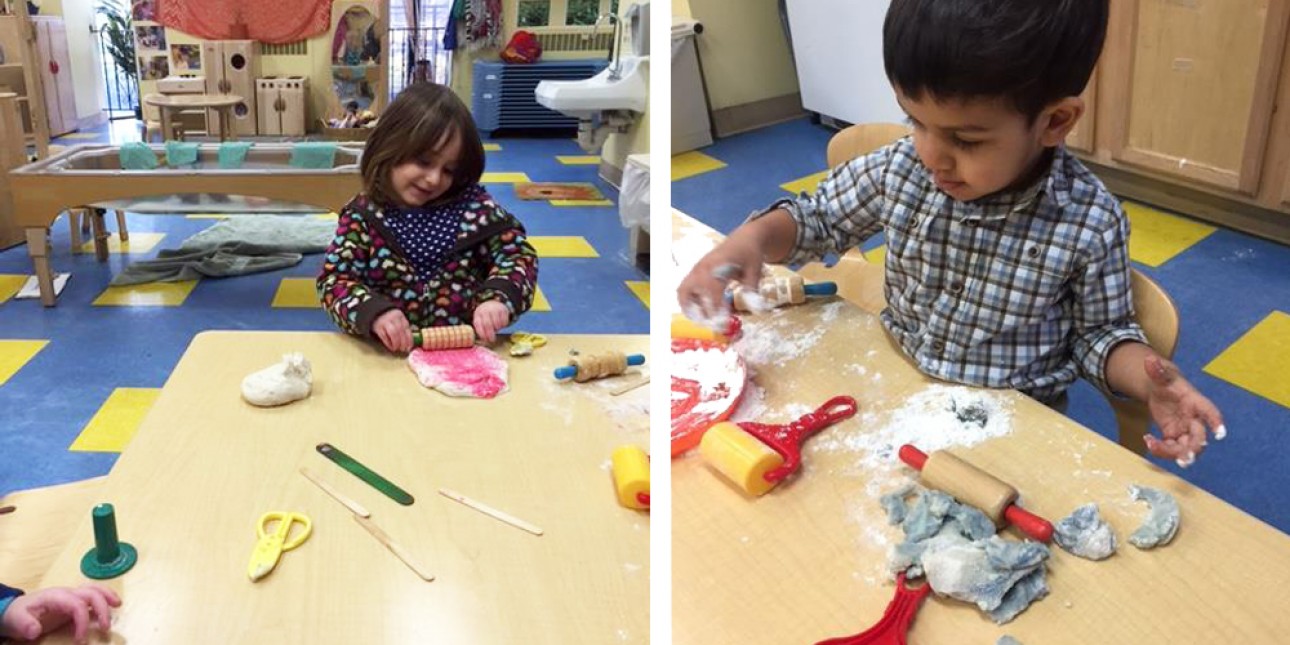In the Classroom: The Moonbeams

More Than Just Play
Play-dough is a staple around PIC, but parents may not realize just how valuable a learning tool it can be, hitting just about every developmental area.
The magic often begins first thing in the morning, when a teacher and the earliest arriving children take a few simple ingredients and watch as flour, salt, oil and water* are transformed into a soft, pliable mass.
It starts out off-white, but it is easy to customize color choices with a bit of paint or food coloring. Kids can work the color through and watch as their lump first appears marbleized, then more homogenized. And if children share bits of different-colored dough, the magic goes a step further.
Children practice hand-eye coordination and fine motor skills as they roll, shape and cut with various tools. Moonbeams also add their own personal favorite props, such as small dump trucks for filling with gravel, animals that leave their footprints, and craft sticks that work well as cutters or birthday candles.
With adults on hand, children will hear words that may be new to them, such as flat or squishy.
When children begin working with play-dough, you can never be sure where their imaginations will take them. It is a great medium for dramatic play, with children breaking off pieces to make broccoli, and handing it to a friend with a warning that, “It’s hot!”
Around the play-dough table recently, children watched as a teacher rolled out “pizza dough,” topped it with various delicacies, and cut it into slices. As they all clamored, “I want some,” a second teacher modeled better manners by asking much more politely for a slice, which the Moonbeams were all quick to emulate!
*Basic Play-dough recipe: 3 cups water, 1 cup salt, 1 cup water, 1 Tbs cooking oil. Combine dry ingredients, then work wet ingredients in; knead until smooth. Keeps for 1-2 weeks in an airtight container.